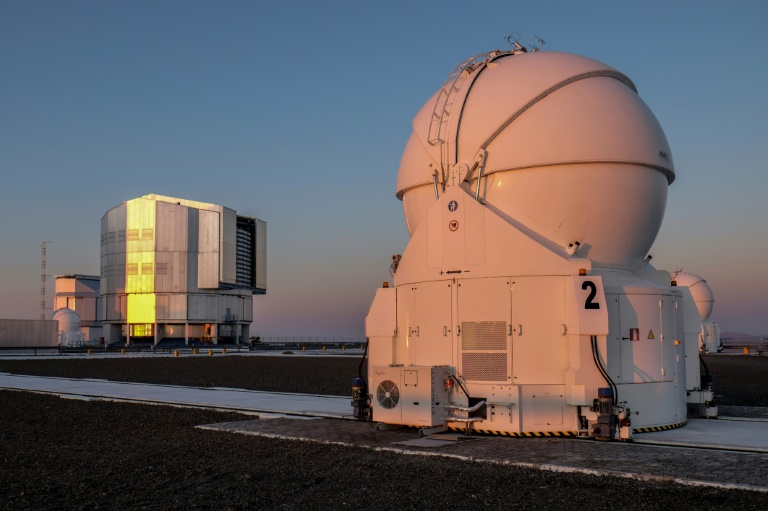The Atacama desert, 1,200 kilometers (750 miles) north of the capital Santiago, provides ideal conditions where astronomers study the stars in darkness so profound they appear like diamonds on velvet.
Scientists estimate that by 2020, Chile — a critically important country for optical and radio astronomy — will host 70 percent of the globe’s astronomical infrastructure.
But the ever-expanding use of cheap light-emitting diode (LED) lighting in the booming South American country is starting to concern astronomers desperately trying to safeguard some of the world’s darkest skies.
“Unfortunately, as we have more and more white lights, the deterioration of the skies has increased by up to 30 percent compared to the end of the last decade,” said scientist Pedro Sanhueza.
Chile takes the problem of light pollution so seriously that Sanhueza heads up an organization called the Office for the Protection of Quality of the Sky (OPCC).
Its main task is to make the people of northern Chile aware of the particularly high night-sky quality and the negative impacts of light pollution.
Sanhueza says that though the quality is good, the sky over northern Chile is becoming “an area of risk,” threatening the profound nocturnal darkness required for the study of phenomena such as solar flares, planetary nebulae, black holes and supernovas.
Fueling the threat, he adds, are communities such as Antofagasta, Coquimbo and La Serena, where LED lights are increasingly used in homes, streetlights, store signs and billboards.
A study published in December in the journal Science Advances has shown that global lighting has increased in both quantity and intensity by about 2 percent per year from 2012 to 2016.
– Urban boom –
At the Paranal Observatory deep in the Atacama desert, which houses the European Southern Observatory’s Very Large Telescope array — consisting of four telescopes — staff are doing all they can to limit light leaking out into the atmosphere.
After sunset, vehicles travelling around the observatory are prohibited anything but their parking lights. Flashlights, if needed, are turned to the ground.
Astronomers’ residences at the base — 2,635 meters ( 8,645 feet) above sea level — are dimly-lit, to avoid interfering with observation of the galaxies above.
But the urban boom has been an unstoppable reality for 20 years in northern Chile, where cities have felt the economic effects of the boom in copper, of which the South American country is the world’s largest producer.
Halos of light above towns are easily visible from observatories within a 150 kilometer (90 mile) radius.

Chile takes the problem of light pollution so seriously that it created the Office for the Protection of Quality of the Sky (OPCC)
“We have measured the impact of this and we have already experienced difficulties making observations at 20 degrees above the horizon. That’s going to increase a lot and will prevent us from studying the furthest stars,” said Chris Smith, head of the observatory at Tololo, some 80 kilometers (50 miles) from the town of La Serena.
– Hazardous to health –
Urban growth has gone hand in hand with huge infrastructure projects to extract copper and even the construction of a brightly-lit highway through the Atacama itself.
Smith is calling for more education in schools about the sustainable use of light, the need to use “warmer” sources of lighting that are less polluting, and to avoid turning them towards the sky.
“We are already seeing a big level of impact and we need to control it now,” Smith, an American astronomer, says — adding there can be “no question of shutting observatories down.”
However, this is what many fear could ultimately happen to the Monte Palomar observatory in California, which has had to drastically cut down its activities because of the light pollution from Los Angeles.
The Chilean government in 2012 approved a new lighting standard designed to cut down on pollution, but nevertheless, scientists acknowledge that it’s an uphill battle.
Download our app